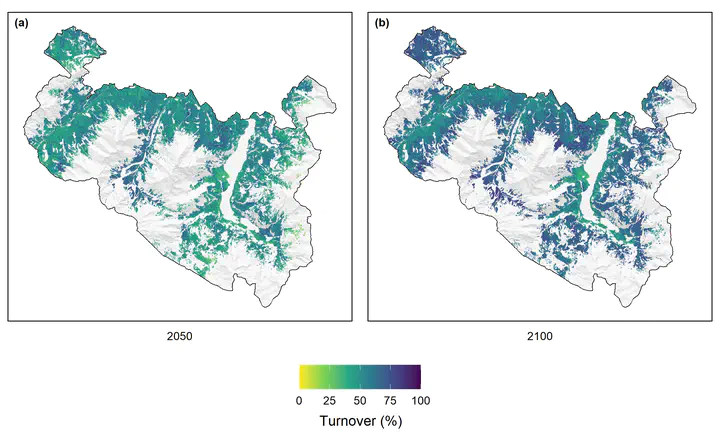Projected climate and canopy change lead to thermophilization and homogenization of forest floor vegetation in a hotspot of plant species richness

Abstract
Mountain forests are plant diversity hotspots, but changing climate and increasing forest disturbances will likely lead to far-reaching plant community change. Projecting future change, however, is challenging for forest understory plants, which respond to forest structure and composition as well as climate. Here, we jointly assessed the effects of both climate and forest change, including wind and bark beetle disturbances, using the process-based simulation model iLand in a protected landscape in the northern Alps (Berchtesgaden National Park, Germany), asking: (1) How do understory plant communities respond to 21st-century change in a topographically complex mountain landscape, representing a hotspot of plant species richness? (2) How important are climatic changes (i.e., direct climate effects) versus forest structure and composition changes (i.e., indirect climate effects and recovery from past land use) in driving understory responses at landscape scales? Stacked individual species distribution models fit with climate, forest, and soil predictors (248 species currently present in the landscape, derived from 150 field plots stratified by elevation and forest development, overall area under the receiving operator characteristic curve = 0.86) were driven with projected climate (RCP4.5 and RCP8.5) and modeled forest variables to predict plant community change. Nearly all species persisted in the landscape in 2050, but on average 8% of the species pool was lost by the end of the century. By 2100, landscape mean species richness and understory cover declined (−13% and −8%, respectively), warm-adapted species increasingly dominated plant communities (i.e., thermophilization, +12%), and plot-level turnover was high (62%). Subalpine forests experienced the greatest richness declines (−16%), most thermophilization (+17%), and highest turnover (67%), resulting in plant community homogenization across elevation zones. Climate rather than forest change was the dominant driver of understory responses. The magnitude of unabated 21st-century change is likely to erode plant diversity in a species richness hotspot, calling for stronger conservation and climate mitigation efforts.